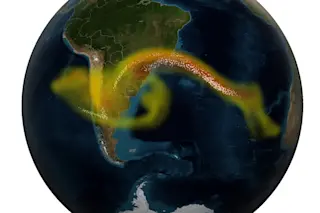At Yosemite National Park in California, granitelike towers loom over the park’s main valley. But one monolith stands out: Half Dome, which, with its curved, peeling layers, looks a bit like an onion. Until recently, experts weren’t sure what caused these layers to peel and fracture, but new research in the journal Nature Communications suggests hot days are to blame. High temps cause the stone to expand and sometimes fracture into layers. The event that helped inspire the Nature Communications paper came after a hot summer’s day at a different, much smaller dome near Yosemite. There, Scott Lewis, an engineering geologist and one of the paper’s authors, went to assess a dam damaged by such a fracturing event. On site, he witnessed something few ever have.
Myself and two of my colleagues went up to see what was going on. There were a number of cracks on this granite dome, ...















